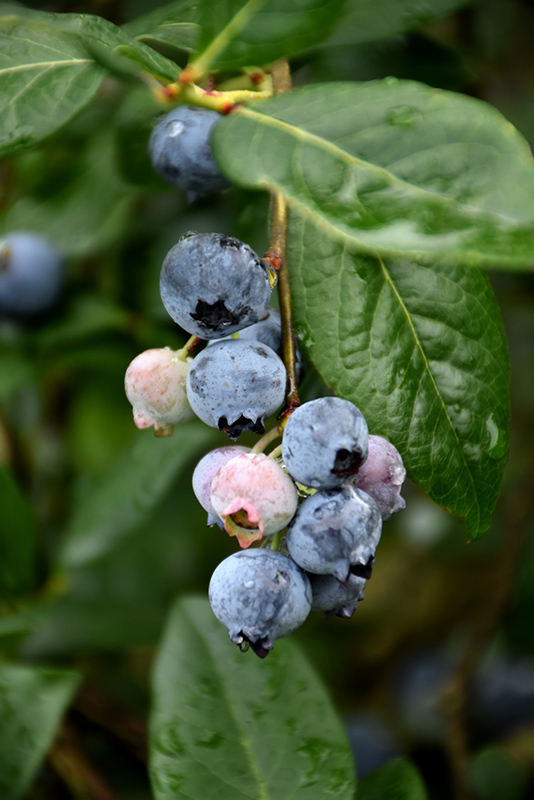Plant Finder
Blue Jay Blueberry
Vaccinium corymbosum 'Blue Jay'
Height: 7 feet
Spread: 7 feet
Sunlight:
![]()
![]()
Hardiness Zone: 4
Group/Class: Highbush Blueberry
Description:
A popular shrub prized for its reliable yields of large, tasty fruit in mid summer and pretty bell-shaped flowers, bushy, upright, and fast growing; blueberries need highly acidic soil, perfect drainage and mulch, plant with peat moss
Edible Qualities
Blue Jay Blueberry is a medium-sized shrub that is commonly grown for its edible qualities. It produces clusters of blue round berries which are usually ready for picking in mid summer. The berries have a sweet taste and a juicy texture.
The berries are most often used in the following ways:
- Fresh Eating
- Cooking
- Baking
- Preserves
Features & Attributes
Blue Jay Blueberry features dainty clusters of white bell-shaped flowers with shell pink overtones hanging below the branches in mid spring, which emerge from distinctive hot pink flower buds. It has green deciduous foliage. The glossy oval leaves turn yellow in fall. It features an abundance of magnificent blue berries in mid summer. The smooth brick red bark and yellow branches add an interesting dimension to the landscape.
This is a multi-stemmed deciduous shrub with an upright spreading habit of growth. Its average texture blends into the landscape, but can be balanced by one or two finer or coarser trees or shrubs for an effective composition. This is a relatively low maintenance plant, and usually looks its best without pruning, although it will tolerate pruning. It is a good choice for attracting birds to your yard. It has no significant negative characteristics.
Aside from its primary use as an edible, Blue Jay Blueberry is sutiable for the following landscape applications;
- Orchard/Edible Landscaping
Planting & Growing
Blue Jay Blueberry will grow to be about 7 feet tall at maturity, with a spread of 7 feet. It tends to be a little leggy, with a typical clearance of 1 foot from the ground, and is suitable for planting under power lines. It grows at a fast rate, and under ideal conditions can be expected to live for approximately 30 years. This variety requires a different selection of the same species growing nearby in order to set fruit.
This shrub is typically grown in a designated area of the yard because of its mature size and spread. It does best in full sun to partial shade. It does best in average to evenly moist conditions, but will not tolerate standing water. It is very fussy about its soil conditions and must have sandy, acidic soils to ensure success, and is subject to chlorosis (yellowing) of the foliage in alkaline soils. It is quite intolerant of urban pollution, therefore inner city or urban streetside plantings are best avoided, and will benefit from being planted in a relatively sheltered location. Consider applying a thick mulch around the root zone in winter to protect it in exposed locations or colder microclimates. This is a selection of a native North American species.
Disclaimer - Rutgers Landscape & Nursery Plant Finder is an online resource representing many of the varieties that we carry over the course of the season, and is intended for informational purposes only. Inventory varies seasonally, so we cannot guarantee that every plant will be in stock at all times - please contact Rutgers directly for current availability.



